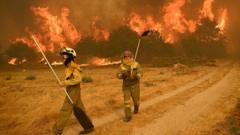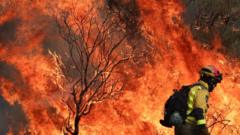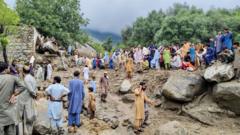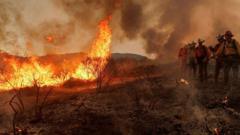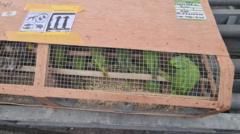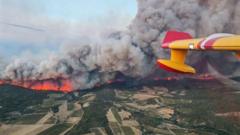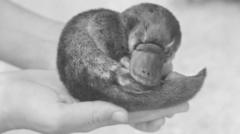Snow leopards, a critically endangered species, face threats from livestock attacks and climate change. In a bid to protect both the big cats and farmers, the WWF, in collaboration with Lahore University of Management Sciences, has introduced AI-powered cameras to alert villagers about leopard sightings and enhance conservation efforts despite some challenges in community acceptance.
Innovative AI Alert System Aims to Protect Snow Leopards and Livestock
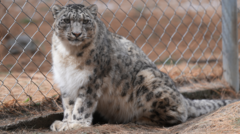
Innovative AI Alert System Aims to Protect Snow Leopards and Livestock
New AI technology developed in Pakistan hopes to mitigate human-wildlife conflict and secure the future of endangered snow leopards.
In the rugged mountains of Gilgit-Baltistan, Pakistan, an innovative solution is being tested to safeguard the dwindling population of snow leopards and the livelihoods of local farmers. The World Wide Fund for Nature (WWF), in partnership with Lahore University of Management Sciences (LUMS), has developed artificial intelligence (AI) technology to monitor snow leopards and alert villagers via text messages when these elusive predators are near.
Currently, the global population of snow leopards is estimated between 4,000 and 6,000, with around 300 residing in Pakistan. Unfortunately, these beautiful creatures cannot growl but instead make a soft purring noise, evident in a poignant case involving a snow leopard named Lovely, who was orphaned 12 years ago. She cannot survive in the wild due to her dependence on humans for food, raising concerns about wildlife-human conflicts when snow leopards scavenge livestock.
The WWF reports that between 221 to 450 snow leopards are killed annually due to livestock attacks. With farmers sometimes resorting to killing the cats in retaliation, it's crucial to find new methods for coexistence. The AI cameras developed by the WWF are equipped with solar panels and aim to detect the presence of snow leopards, sending alerts to farmers to help keep their livestock safe.
Challenges have surfaced in the implementation of this project, as community acceptance has not been straightforward. Some locals were skeptical about the benefits of the AI system, and initial attempts to install the cameras faced resistance, including damages and privacy concerns rooted in cultural traditions. The WWF recognizes the importance of community engagement, seeking consent from villagers and ensuring that the technology aligns with their values.
Despite the hurdles, some villagers acknowledge the pressing threats posed by snow leopards and their role in maintaining ecosystem balance. As one farmer reflected, understanding the ecological importance of the snow leopards is vital, as their predation helps manage populations of ibex and stops overgrazing, preserving essential grasslands for livestock.
Compounded by climate change, which pushes villagers into traditional leopard habitats, the need for a balanced coexistence strategy is more urgent than ever. The WWF plans to expand their efforts by experimenting with various deterrents like sounds and lights to further minimize conflicts.
While the AI cameras are seen as a beacon of hope, experts suggest they cannot operate in isolation. Continued awareness and education will be crucial in changing perceptions and promoting wildlife conservation in harmony with local agricultural practices.

